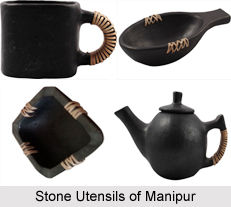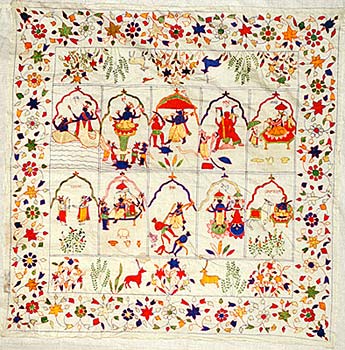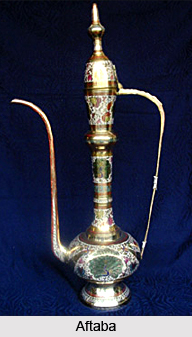 Lacquer bangles are the have been widely used in India since ancient times. Lac is produced by a unique scale insect indigenous to India. Secreted by a female during development and reproduction, Lac is the only natural resin of animal origin.
Lacquer bangles are the have been widely used in India since ancient times. Lac is produced by a unique scale insect indigenous to India. Secreted by a female during development and reproduction, Lac is the only natural resin of animal origin.
Lac secreting insects live in large masses in trees roosting on young twigs in the wild. They are also grown on cultivated farms for the purpose of obtaining Lac. In some north Indian states, specially, the Adivasis and the tribal populace depend upon their living on collecting Lac. The lac bangles are the most famous lacquer ware. In ancient times these bangles were studded with gold and precious stones attaching a status symbol. Today, they are available with beads, stones and mirrors in attractive colours and designs to add to the beauty of a woman in the most economical way.
The Lac residue on the twigs of each succeeding generation of the Lac insects is scraped off the twigs into long sticks. Then these are soaked in a water tub and later beaten with a wooden pestle till all impurities are removed. This makes the Lac show up its natural red colour and a granular surface. This is converted into shellac for use in India.
Quite a lot of Lac produced in India goes into the manufacturing of bangles as bangles are an essential item of a woman`s jewellery, especially that of an Indian bride. In the important bangle making centres of Bihar and Rajasthan, even the unusable Lac residue is used as a core for bangles and the finer Lac for top decoration. At present, Hyderabad has become another centre for Lac bangle manufacture.
The technique of bangle making has not changed much from the age old one. Most bangles have their inner core made from the refuse Lac, which is then covered with a thin layer of fine Lac. White clay is added to give it strength. The purer Lac that is used on top for decorating the bangle id mixed with lithopone and colouring agent. The dry ingredients are then heated, mixed together and quickly kneaded and pounded with a pestle to soft dough.
In India, Lac bangles were mostly worn by married women and this custom still persists in tribal areas, like the Munda, Oraon Tribe, and Santhal Tribe. Popular among the poorer sections of society because of its cheapness in the olden days, it is a fashion accessory of the sophisticated now. Synthetic resins have replaced the laborious process of collecting Lac from natural sources now, but the skill of the Lac craftsmen are as exquisite as before.

The Hindu community of Lac workers called Laheri live mainly in Bihar, Orissa, West Bengal, Maharashtra, and Madhya Pradesh. In the Deccan, The Muslims rule the Lacquer trade. The Lac bangle making is usually a family enterprise.
Core Lac and covering Lac are heated separately and rolled into cylinders. The core Lac is shaped into a cone and the Pure Lac is wound round it to completely cover the hard core. Then a series of bangle lengths are cut from it into different sizes. The operation involved in Lac bangle making is quite simple and mostly done by hand. A rudimentary domestic stove is used to heat the Lac. The decoration is done after the Lac bangle shapes are dry and formed into required diameter.
Generally, Lac bangles are for presentation as Chura sets for the bride, a wedding must, it is either made into sets of separate bangles or a set is joined together into one rigid piece, which can be split apart afterwards. The decoration on the bangles vary widely, it could be just stamped pattern, or a marbleized, patterned metal strips pressed into the Lac, or else the popular design of embellishing it with glass beads, mirror pieces of flower shapes, etc.
The Hyderabad craftsman uses a unique decorating style with synthetic stones and glass, and the Lad Bazaar in this city is famous for its Lac bangle shops lined along the streets. The craftsmen are mainly Muslim of the Mudraj and Munnur Reddi caste. The fancy Lac bangles are named after glamorous film stars of Hindi movies with which people are familiar.
The lacquer takes its roots in China it there has a few three thousand years, and then developed in all the Southeast Asia. In Myanmar the tree which one takes the resin is it Thit-si. These trees push naturally in whole forests almost in all Myanmar in light altitude. One takes the resin, a little like one does it with latex, by notches at the base of the trunk on which one fixes small bowls in bamboo. The sap of the lacquer tree has a very strong adhesive quality and a splendid brilliance. It has many qualities as to make impermeable the objects which it covers. It adheres on many surfaces, bamboo, woods, and sheets of palm tree, metal and leather. It resists the insects and guards on all occasions its flexibility.



















